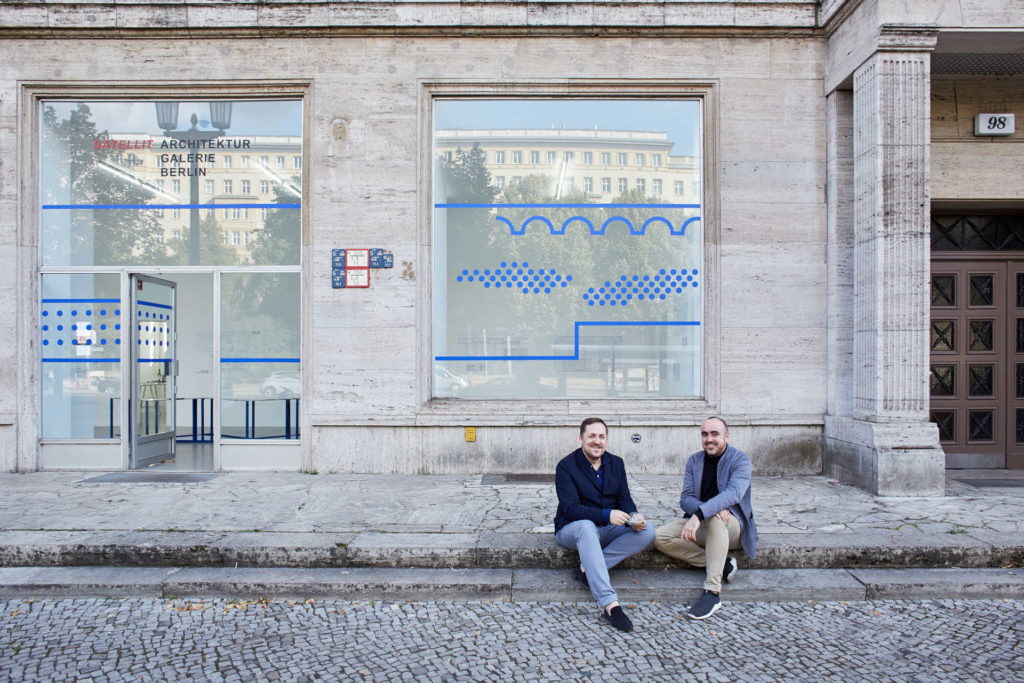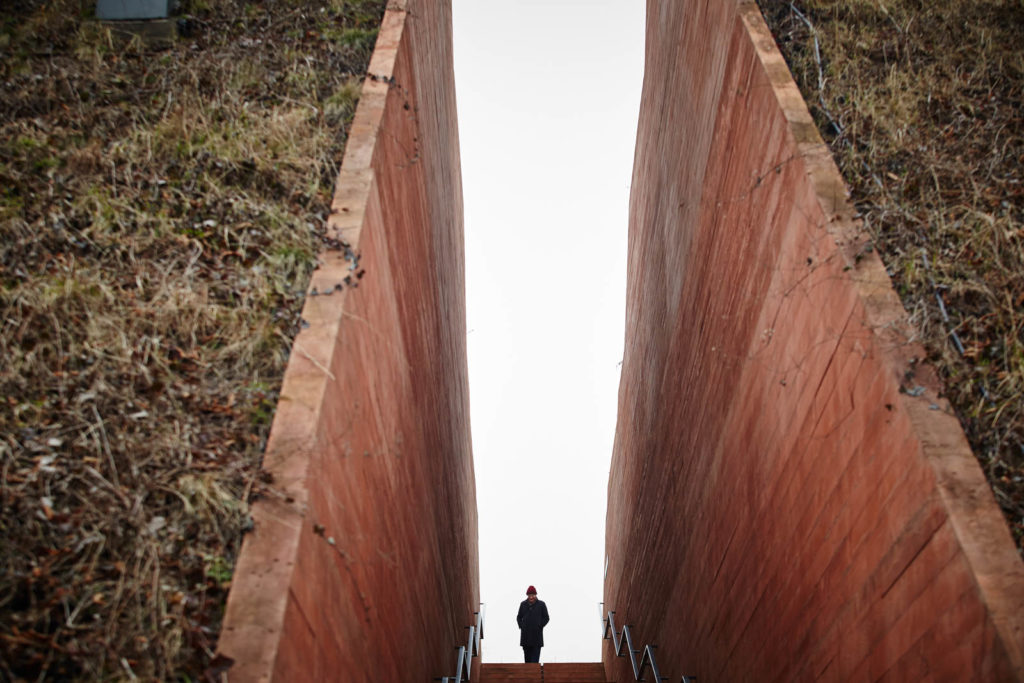Ivan Blasi: The architecture of uncertainty
In Poland, a country of more than 38 million inhabitants, with nearly 61% of its population living in urban areas, the transformation of cities has exerted a great impact on the lives of the citizens, despite the fact that this rate has not changed much in the last 30 years.
Ivan Blasi – the coordinator of the EU Prize for Contemporary Architecture – Mies van der Rohe Award
One of the greatest challenges in Poland is a very high average annual level of air pollution in cities, but there also other prospecting issues that other European cities are facing today, such as massive tourism, abusive speculation (international and local) or commercialisation of public space. Correspondingly to the situation in other European countries, political polarisation in Poland has brought about increased demagogy, exploitation of socio-economic instability, encouragement of xenophobic and protectionist sentiments, and an approach to culture that frequently turns it into a mere product of nationalist folklore, an approach far from the European attitude that transcends traditional nation-state borders and identities.
European countries value culture, history and heritage, and the European Commission attempts to strengthen these values with critical approaches, such as the 2018 European Year of Cultural Heritage, however, although our position in the world is shaped by the fact that the locus of economic and cultural influences is steadily shifting towards the East, the core of European human values has to be reviewed and reinforced without the temptation to import the policies that we have fought against in Europe over the past centuries.
The above values and our response to them are essential to understand the role of architecture in this delicate moment of transformation. We constantly speak about a change of paradigm and resilience, because we are fascinated with change during a cultural crisis and a culture of crisis, however, these terms have been trivialised due to the lack of truly humanistic and critically-thinking leadership.

Marcin Szczelina i Ivan Blasi, photo: Bartek Barczyk
“Political polarisation in Poland has brought about increased demagogy, exploitation of socio-economic instability, encouragement of xenophobic and protectionist sentiments, and an approach to culture that frequently turns it into a mere product of nationalist folklore”.
In Polish, in Poland
In the past years I have been frequently asked about Polish architecture and its significance. There are many similarities between the challenges and the provided responses in architecture in Poland and other European countries. The principal peculiarity of each area consists in the particular conditions that include geopolitical realities, local policies, industrial opportunities and social involvement. The circumstances of Lublin and Szczecin vary and their specific connection with Lviv and Berlin can become stronger than the link they establish with Warsaw, despite language differences. Polish literature, like French, Danish or Catalan literature, is written in Polish, regardless the provenance of the writer.
For me, Polish architecture is the one built in Poland, regardless of the origin of the author, because it was built in Poland and in the specific conditions of this country, although it might have been designed in a totally different context. In the 1980s, schools of architecture exerted a significant impact on the development of design, but today they predominantly teach how to respond to challenges. Following from this, a design of a Porto-based architect or a Katowice-based architect of a building in a country that is not their own, responds to attitude (and not to style), and the local conditions of the place where the building is created exert a greater influence on the design, which in turn becomes part of the local identity.
Polish architecture, like a European identity, is heterogenic, but it responds to local conditions that, in Europe that is still under construction, define the character of each city or region. General local peculiarities, such as climate, geography and history, are not going to change drastically or suddenly, but the construction processes, the cost of manual labour or general codes and regulations are becoming more alike, hence strengthening the importance of specific policies and the architects’ attitude towards them in the definition of local architectures and identities.
“The circumstances of Lublin and Szczecin vary and their specific connection with Lviv and Berlin can become stronger than the link they establish with Warsaw, despite language differences”.
The growing demand on the international impact of Polish architecture
In the context described above, I feel comfortable speaking about a specific attitude, in this case – Polish. Poland participated for the first time in the European Union Prize for Contemporary Architecture – Mies van der Rohe Award in 1996. Since then, the number of projects competing for the Prize has increased exponentially, creating a group of projects that explain a particular evolution of Poland’s transformation. 45% of these works tackle the issue of culture and education, followed by single-family houses and office buildings, which represent 15%, each.
Although this group of projects represents a very small figure in comparison to what has been built in the entire country in the past twenty-two years, it is essential to understand the importance of each one of these projects, and the influence they exert as a catalyser for clients, citizens and policymakers. It also describes the actual context and the association with the construction of the European Union, which probably explains why most of the recent projects are connected with culture, as a result of European programmes.
Architecture plays a role in ensuring the sustainability of a European city in a globalised world, which explains the growing demand on the international impact of Polish architecture. But how can we describe its quality using the projects of the EU Mies Award as the starting point?

Szczecin Philharmonic Hall , the winner of Mies van der Rohe Award 2015
Architecture of illusion, not of imagination
Ten years ago, Josep Quetglas wrote a text entitled “Be under no illusions” (Croquis, ISSN 0212-5633, nº 49-50 JUN-SEP, 1991, pp 22-27), in which he opposed the architecture of illusion or fantasy and preferred the architecture of imagination; imagination vs. illusion. The aim is not to say that one is better than the other, but to differentiate between the two models of design. In architecture of illusion, a designer has to physically build his idea, while in architecture of imagination, the sole design is architecture and a way of imagining, which doesn’t necessarily has to be built, in order to become architecture. In the case of the former, construction is necessary to be able to discuss architecture.
Commercial architecture with minimum intentions is architecture of illusion or fantasy; when there is no intention at all, even the fantasy is impaired. In the Prize’s group of projects, despite their very high quality, only a small group represents architecture of imagination. My limited knowledge of Polish history, culture and architecture allows me to be more naïve and to say that, although the architecture I have seen is of extremely high quality, nearly all of it represents architecture of illusion, and not of imagination.
The dissemination of Polish architecture is the key to understand it, and to gain more knowledge about the quality of architecture. Magazines, critics, participation in international events and digital publications and guides have helped those of us, who live far from the Polish creative epicentre, to acknowledge that things are bubbling in this country. But it is very difficult to find – at least in English – a global critical discourse inherent in the work of Polish architects. It is very difficult to find architects who are able to combine a critical approach with implemented projects of outstanding architecture.
The presence of critics of architecture is essential to understand the particular Polish context and to be able to place it in a broader international context, but when we come across architecture of imagination, we know that it has the capacity to understand the global context, respond to it, continuously build a personal critical discourse through implemented and not implemented projects and, at a certain point, to become influential to a certain group of people.
“Commercial architecture with minimum intentions is architecture of illusion or fantasy; when there is no intention at all, even the fantasy is impaired. In the Prize’s group of projects, despite their very high quality, only a small group represents architecture of imagination”.

Katyn Museum, a finalist of Mies van der Rohe Award 2017
A great opportunity to test
At the beginning of this text I spoke about the challenges that European cities are facing today, such as massive tourism, and speculation or commercialisation of public space. I imagine that Poland could try to overcome the above challenges in the country’s specific conditions that would make up for a strong architecture of imagination.
When seeing great examples of public space and recovered waterfronts in Polish cities, I am afraid that I am also seeing a resemblance to other places, in which similar designs following similar city policies have not helped to improve local conditions. I’ll give you an example: Warsaw’s Vistula Boulevards, a very good design of public space, definitely necessary to open up the city to its river, certainly has to take into account gentrification, connection to all of the surrounding neighbourhoods, river water quality, needs of the local residents, tourism, private vehicle transport, naturalisation of the river sides, commercial use, public water transport, use of existing and new buildings, and construction of public housing, among other city needs.
The exciting thing about Poland is that when looking from the outside, it is a great opportunity to be able to test new and improved forms of city and rural transformation, which have failed in other places: infrastructures, public transport, housing and public space. Clients are essential in taking advantage of these opportunities, although we know that most public bodies are not brave enough to embrace them and to bring them forward. Only we, the committed and critical citizens, can force them to take the plunge and leave the demagogic electoral strategies behind.




